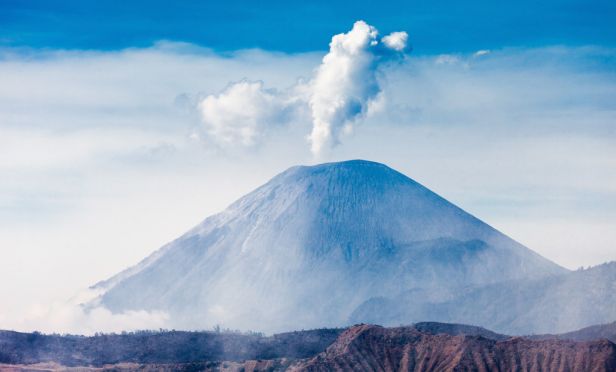 The quake and volcano may hurt the nation's all-important tourism industry, which was rattled by a series of deadly earthquakes in popular tourist destination of Lombok island, near Bali. (Photo: Shutterstock)
The quake and volcano may hurt the nation's all-important tourism industry, which was rattled by a series of deadly earthquakes in popular tourist destination of Lombok island, near Bali. (Photo: Shutterstock)
(Bloomberg) – The Mount Soputan volcano in Indonesia erupted on Wednesday, throwing ash as high as 4,000 meters into the sky, days after an earthquake and tsunami killed more than 1,400 people on the same island.
|Threat of lava, simmering clouds
Authorities ordered people out of a 4-kilometer radius of the peak of the Mount Soputan in North Sulawesi province, citing threat of lava and simmering clouds from the eruption, according to the National Disaster Mitigation Agency. Sam Ratulangi International Airport in Manado — the capital of North Sulawesi — is operating normally, agency spokesman Sutopo Purwo Nugroho said in a statement.
Recommended For You
Want to continue reading?
Become a Free PropertyCasualty360 Digital Reader
Your access to unlimited PropertyCasualty360 content isn’t changing.
Once you are an ALM digital member, you’ll receive:
- Breaking insurance news and analysis, on-site and via our newsletters and custom alerts
- Weekly Insurance Speak podcast featuring exclusive interviews with industry leaders
- Educational webcasts, white papers, and ebooks from industry thought leaders
- Critical converage of the employee benefits and financial advisory markets on our other ALM sites, BenefitsPRO and ThinkAdvisor
Already have an account? Sign In Now
© 2025 ALM Global, LLC, All Rights Reserved. Request academic re-use from www.copyright.com. All other uses, submit a request to [email protected]. For more information visit Asset & Logo Licensing.








